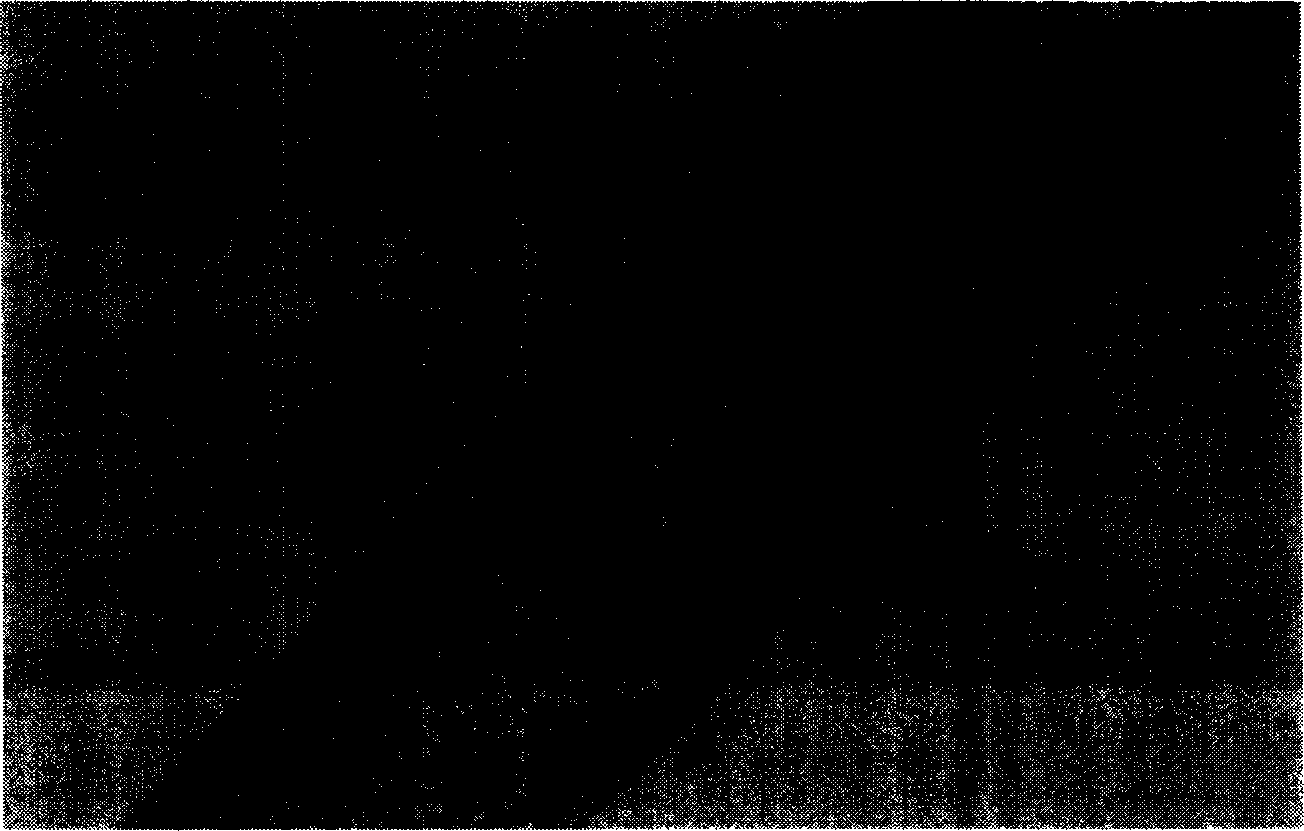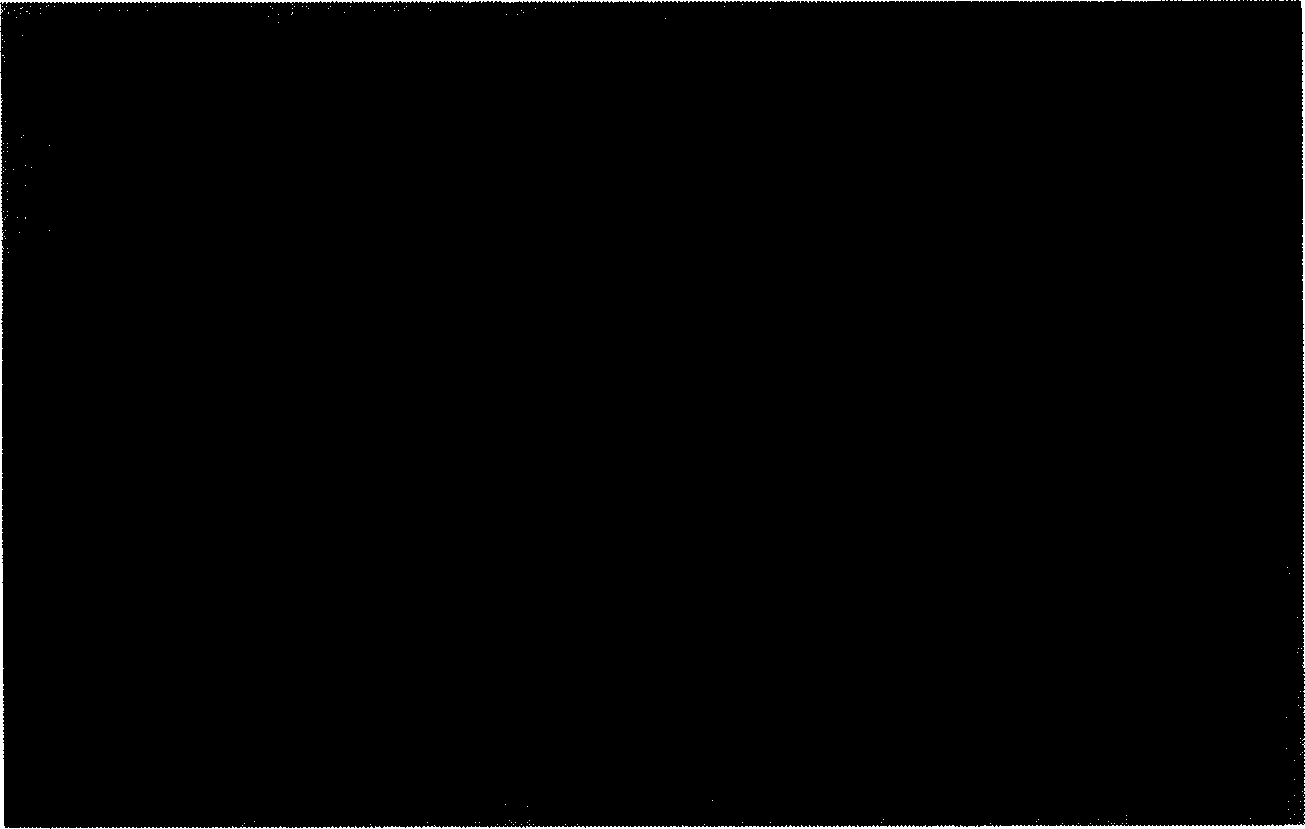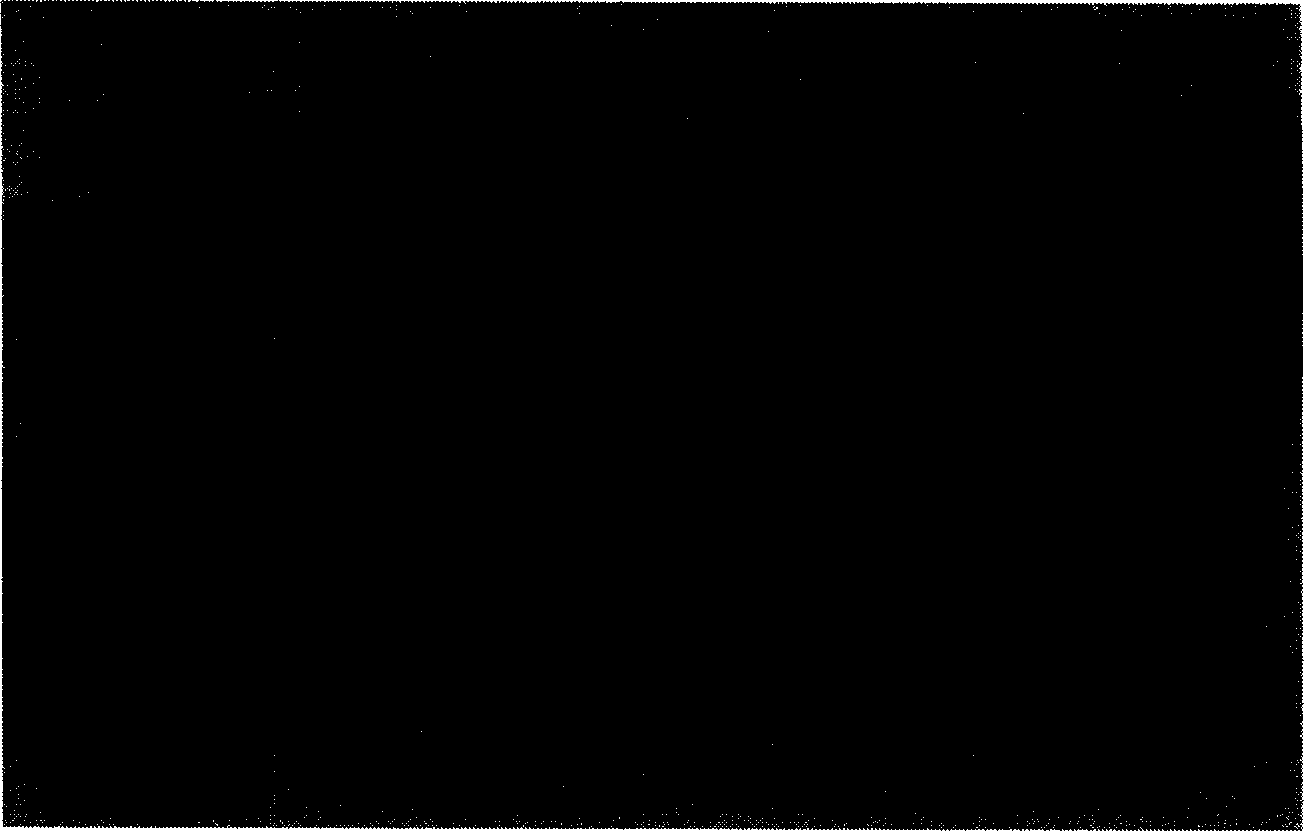Process for detecting concentration of nonionic surfactant in waste water using spirogyra
A surfactant and non-ionic technology, which is applied in the field of detecting the concentration of non-ionic surfactants in waste water by Spirogyra, can solve the problems of unsuitable large sample detection, failure to meet requirements, low sensitivity, etc., and achieve easy observation and judgment, Increased sensitivity and clear symptoms
- Summary
- Abstract
- Description
- Claims
- Application Information
AI Technical Summary
Problems solved by technology
Method used
Image
Examples
example 1
[0036] Determination of Biodegradation Efficiency of Nonionic Surfactant AE (Alkylphenol Polyoxyethylene Ether) with Water Sponge
[0037] In order to study the biodegradability of nonionic surfactants, the surfactant degrading strains were inoculated in the nonionic surfactant AE (alkylphenol polyoxyethylene ether) solution with an initial concentration of 2000mg / L, and the strains were inoculated in a 250mL cone. After 48 hours of shaking culture in a shaker flask at 37°C, the remaining AE concentration was determined.
[0038] 1. Preparation of materials
[0039] Nonionic surfactant standard sample: alkylphenol polyoxyethylene ether, analytically pure, purchased from Sigma Company (U.S.);
[0040] Spirogyra: It was taken from a ditch not polluted by toxic substances in the suburbs of Changsha City. Spirogyra is in good growth state and is in the vegetative growth period. After washing with distilled water, place it in a large beaker (1000 mL) filled with distilled water f...
example 2
[0057] Determination of the concentration of non-ionic surfactants in wastewater from a chemical plant for daily use
[0058] 1. Preparation of materials
[0059] Nonionic surfactant standard sample: alkylphenol polyoxyethylene ether (AE), analytically pure, purchased from Sigma Company (U.S.);
[0060] Spirogyra: It is taken from a ditch not polluted by toxic substances in the suburbs of Changsha. Spirogyra grows well and is in the vegetative growth period. After washing with distilled water, place it in a large beaker (1000 mL) filled with distilled water for later use.
[0061] 2. Determination of non-response critical concentration
[0062] ①. Preliminary determination of the non-response critical concentration of Spirogyra: Dilute the non-ionic surfactant standard sample AE in a 50mL small beaker with distilled water to prepare 0.0, 1.0, 2.0, 3.0, 4.0, 5.0, 6.0, Concentration gradients of 7.0 and 8.0 mg / L; use tweezers to take about 5 g of sponge, absorb the external m...
PUM
 Login to View More
Login to View More Abstract
Description
Claims
Application Information
 Login to View More
Login to View More - R&D
- Intellectual Property
- Life Sciences
- Materials
- Tech Scout
- Unparalleled Data Quality
- Higher Quality Content
- 60% Fewer Hallucinations
Browse by: Latest US Patents, China's latest patents, Technical Efficacy Thesaurus, Application Domain, Technology Topic, Popular Technical Reports.
© 2025 PatSnap. All rights reserved.Legal|Privacy policy|Modern Slavery Act Transparency Statement|Sitemap|About US| Contact US: help@patsnap.com



